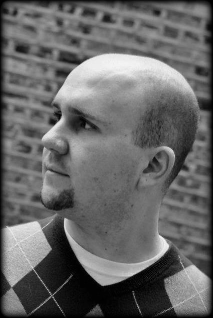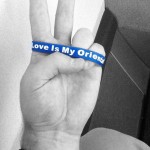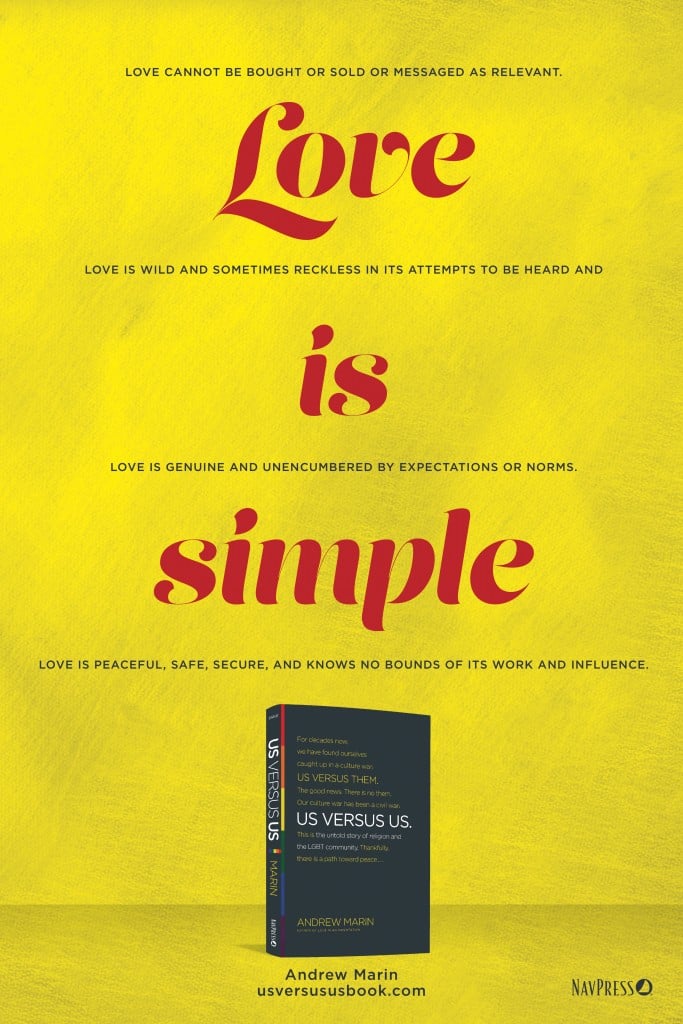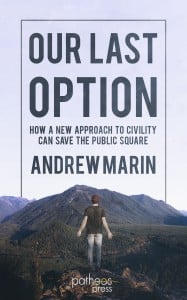 The following post is from Michael Overman. Michael is interning with us this year while working towards his Masters of Divinity at Garrett-Evangelical Theological Seminary. You can check out his blog at findingthebalance.net.
The following post is from Michael Overman. Michael is interning with us this year while working towards his Masters of Divinity at Garrett-Evangelical Theological Seminary. You can check out his blog at findingthebalance.net.
I have always wanted to learn to play the violin…
Perhaps this is because of my brief stint at playing cello in 5th grade (another instrument I love but could never master). Perhaps this is because I was raised in the south and have a certain love for those who are master fiddle players. Or perhaps it’s because I find Alexandre da Costa and Joshua Bell incredibly handsome. Who knows?
The violin is both a simple and an incredibly complex instrument. As a guitarist (still a novice after ten years of playing), I’m familiar with stringed instruments. Apart from their size, one of the most distinct differences between a guitar and a violin is found in their bridges. Whereas a guitar’s bridge—the component that stabilizes the tension of the strings and keeps them spaced evenly—is directly connected to the body of the instrument, permanently in place, a violin’s bridge is different. It is not glued or attached directly to the body, but is in fact held in place by the tension of the very strings it holds in place. The bridge of a violin rests against the body and is kept there by the pressure of the metal pressing against it.
There is value in tension, even when we don’t always know it. I’ve known this to be true of the violin, and thanks to my time at The Marin Foundation this school year, I’ve learned how it is true in the context of relationships and of community.
Every other Monday night, a small group of diverse people meets in a small room at First Free, the Evangelical Covenant congregation that houses The Marin Foundation. We call these meetings Living in the Tension gatherings, based on a statement by Martin Luther King, Jr. in his letter from Birmingham Jail:
I have earnestly opposed violent tension, but there is a type of constructive non-violent tension which is necessary for growth.
Hearing this quote at the beginning of every gathering reminds of our purpose. It’s not to beat around the bush. It’s not to placate or stay silent. It’s to wrestle with the hard questions, with the big challenges. It’s about recognizing our differences, both small and large, and learning to engage in constructive dialogue about the most sensitive of subjects.
Over the course of this year, we’ve talked about a number of things. Sex. Pornography. Prostitution. Beyoncé. Henri Nouwen. Scripture. Inerrancy. Pastoral care. Abuse. Bullying. Body image. Marketing. Sin. Immorality. Belovedness. These are just a handful of the topics that we covered in hour-and-a-half chunks of time twice a month. Rarely is the group of gatherers the same two meetings in a row. Even if it is, we all come back as different individuals every time.
If you take away a violin’s bridge, th instrument can no longer make the beautiful music it’s intended to produce. Without the tension between the strings and the bridge, this merging of wood, plastic, and metal cannot live up to its identity.
Bridges and tension go hand in hand.
At least in the case of a violin. I’m not an architect or an engineer, so I cannot attest to the relationship between bridges and tension elsewhere, but I would imagine it’s somewhat similar.
In my closest relationships, tension is a constant. I value friendships with people whose backgrounds, ideologies, and beliefs are not exactly like mine. I hold dear conversations with friends who are willing to challenge me, willing to play the devil’s advocate. In friendships with people who tend to be more amicable and less challenging, I feel numb, almost stagnant. It’s when there is a tension, a tug-of-war you might say, that I feel most alive, most human.
The friends I have made through my time at the Marin Foundation are people willing to live in the proverbial tension. We recognize our differences, and we look for ways to engage each other respectfully and lovingly. We don’t always see eye to eye. We don’t always agree. But we recognize the benefits of getting to know one another not despite these differences but because of them. The innate tension that exists because of our differences is something that fosters and nurtures growth, a kind of growth that cannot exist without tension. A kind of beauty that relies upon tension in order to be made manifest.
The core of the Marin Foundation’s work is to “build bridges” between the LGBTQ community and the Church. You want to talk about a relationship that’s full of tension? There you have it. Yet the queer community and the church-world have not yet fully realized the depth of beauty that exists in the tension between them. The Marin Foundation and other groups are working to make both groups aware of this beauty, awakening them to the potential awesomeness that exists in the space between them.
I’m wrapping up my internship with The Marin Foundation, but I cannot express how thankful I am for the ragtag band of misfits (this is a compliment, by the way) that meets these Monday nights. I cannot express the gratitude I feel for the ways in which they have challenged me and nurtured me these past nine months. I cannot articulate the love I have received from them fully.
I can however promise to continue my contribution to the Great Work. There will come a day where being lesbian, gay, bisexual, transgender, queer, questioning, intersex, or asexual is not mutually exclusive from being a person of faith—at least the perception that the two are incompatible will no longer exist. Until then, we must maintain the tension. We must keep the bridge of difference kept firmly pressed against the body of humanity, allowing the strings of life to keep making beautiful music.
Much love.











